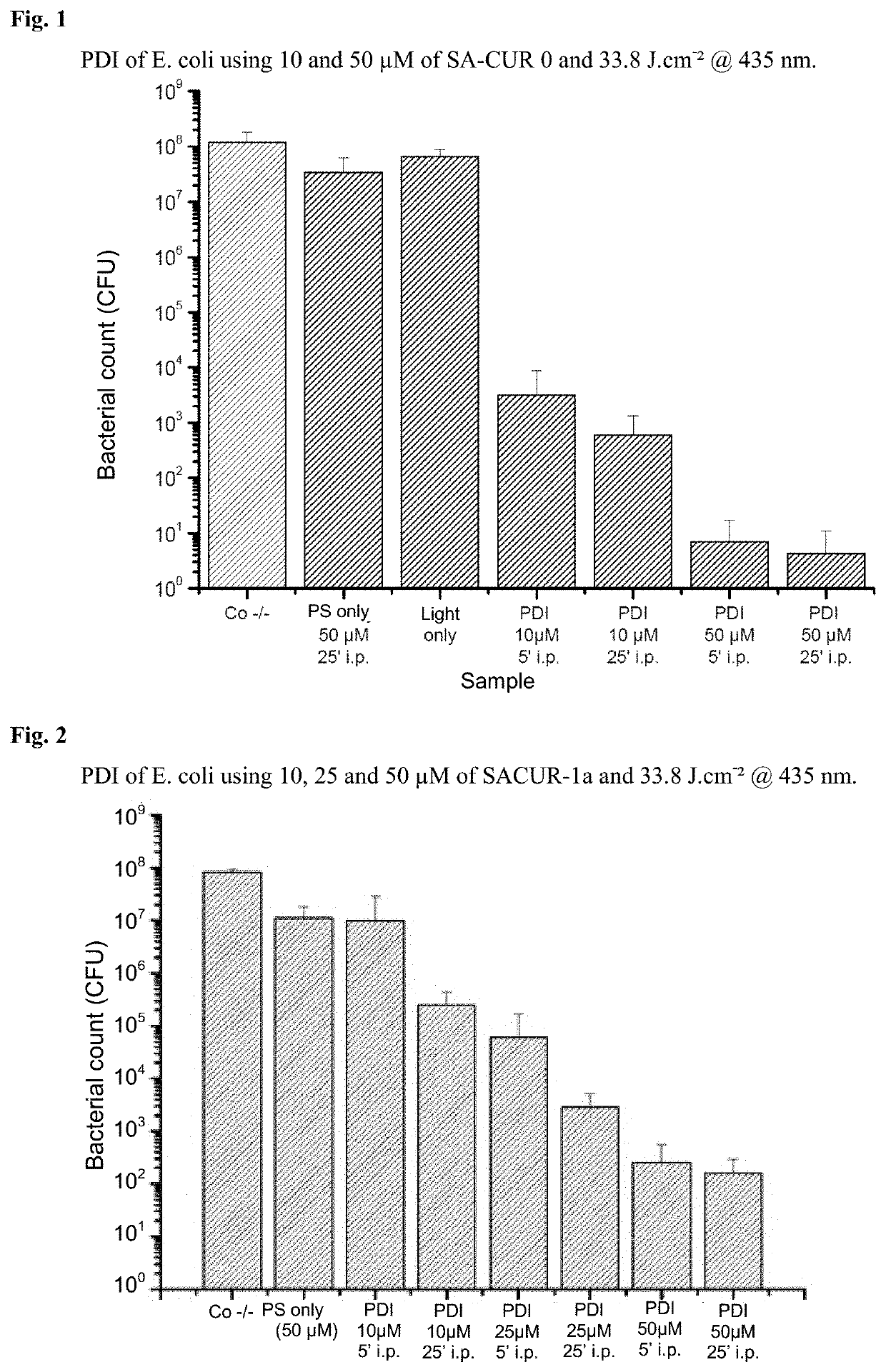1,7-diaryl-1,6-heptadiene-3,5-dione derivatives, methods for the production and use thereof
a technology of heptadiene and dione, which is applied in the direction of antibacterial agents, group 3/13 element organic compounds, drug compositions, etc., can solve the problems of increasing the difficulty of treating bacterial diseases, exhibiting resistance to antifungal preparations, and unable to treat superficial infections, so as to achieve the effect of inactivating microorganisms more efficiently
- Summary
- Abstract
- Description
- Claims
- Application Information
AI Technical Summary
Benefits of technology
Problems solved by technology
Method used
Image
Examples
example 1
) Production of Various 1,7-diaryl-1,6-heptadiene-3,5-dione Derivatives
Overview of the Syntheses
[0619]All of the chemicals were purchased from conventional suppliers (TCI, ABCR, Acros, Merck and Fluka) and used without further purification. The solvents were distilled before use and if required, were dried in the normal manner. Dry DMF was purchased from Fluka (Taufkirchen, DE).
[0620]Thin film chromatography was carried out on thin film aluminium foils coated with silica gel 60 F254, from Merck (Darmstadt, DE). Preparative thin film chromatography was carried out on commercially available glass plates coated with silica gel 60 (20 cm×20 cm, Carl Roth GmbH & Co. KG, Karlsruhe, DE). The compounds were detected with UV light (λ=254 nm, 333 nm) and some detected with the naked eye or stained with ninhydrin. The chromatography was carried out with silica gel (0.060-0.200) from Acros (Waltham, US). NMR spectra were recorded on a Bruker Avance 300 spectrometer (300 MHz [1H-NMR], 75 MHz [13...
example 2
) Phototoxicity Experiments
a) Production of Growing Cultures of Bacterial Strains
[0978]All of the experiments were carried out under sterile conditions in a safety cabinet (Biosafe 4-130, Ehret, Emmedingen, Germany). After adding the photoactive substances, the work was carried out entirely in darkness.
[0979]A sample of the bacterial cell Staphylococcus. aureus (ATCC number: 25923) or Escherichia. coli (ATCC number: 25922) was removed from a cryo-freeze culture and cultured under aerobic conditions at 37° C. and 175 rpm overnight in an orbital shaker (MAXQ4000, Thermo Scientific, Dubuque, Iowa, USA). Growth was carried out in 20 mL Todd-Hewitt broth (Carl Roth, Karlsruhe, Germany) supplemented with 0.3% of yeast extract (AppliChem, Darmstadt, Germany).
[0980]Alternatively, Müller-Hinton media were used for culture:
[0981]Müller-Hinton liquid medium (Merck KGaA, Darmstadt, Germany)
[0982]2.0 g / L meat extract, 17.5 g / L casein hydrolysate, 1.5 g / L starch, pH: 7.4+0.2.
[0983]Müller Hinton a...
PUM
| Property | Measurement | Unit |
|---|---|---|
| energy density | aaaaa | aaaaa |
| pharmaceutical composition | aaaaa | aaaaa |
| resistance | aaaaa | aaaaa |
Abstract
Description
Claims
Application Information
 Login to View More
Login to View More - R&D
- Intellectual Property
- Life Sciences
- Materials
- Tech Scout
- Unparalleled Data Quality
- Higher Quality Content
- 60% Fewer Hallucinations
Browse by: Latest US Patents, China's latest patents, Technical Efficacy Thesaurus, Application Domain, Technology Topic, Popular Technical Reports.
© 2025 PatSnap. All rights reserved.Legal|Privacy policy|Modern Slavery Act Transparency Statement|Sitemap|About US| Contact US: help@patsnap.com



